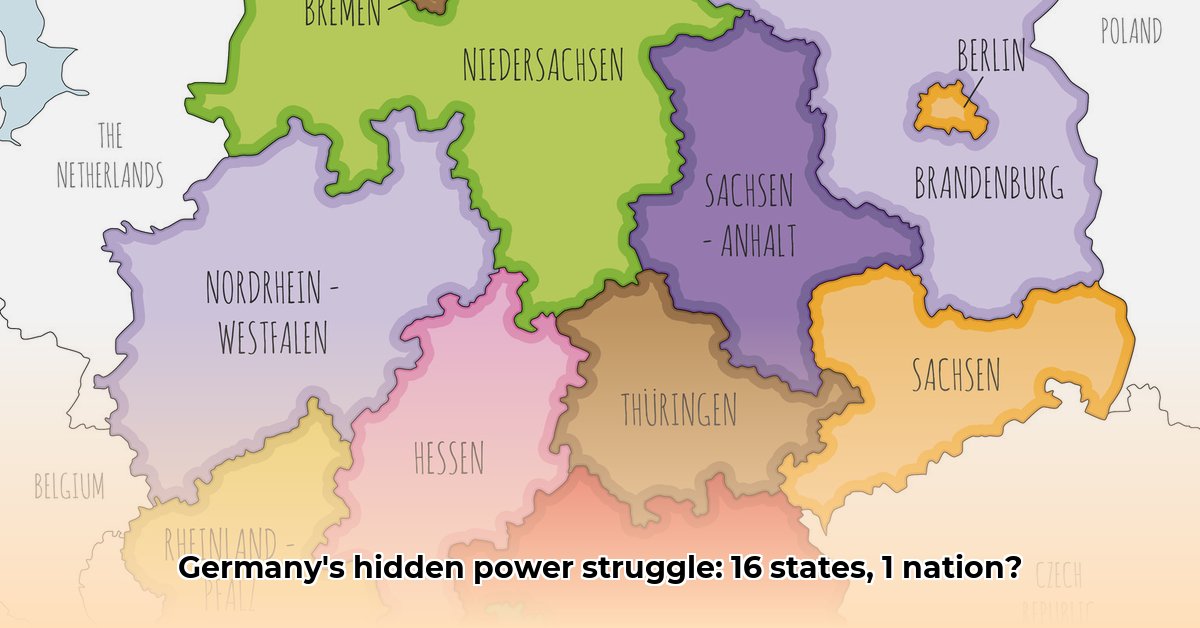
The German Federal System: A Balancing Act
Germany’s political landscape isn't a monolithic structure; rather, it’s a complex interplay between the federal government (Bund) and its sixteen constituent states (Länder). This intricate federal system, enshrined in the Grundgesetz (Basic Law), distributes power effectively, creating a dynamic balance between national unity and regional autonomy. Think of it as a sophisticated orchestra, where each instrument – the Bund and the Länder – plays a distinct yet harmonious role in producing the nation's overall melody. The Bund handles matters of national scope: defence, currency, foreign policy – issues impacting all Germans. However, the Länder retain considerable autonomy over areas like education, culture, and local administration. This division of power is fundamental to understanding Germany's unique political dynamics. But how does this balance manifest in practice? How exactly do these 16 states interact with the national government?
The Bundesrat: The Länder's Voice in Federal Legislation
The Bundesrat serves as the voice of the Länder in federal legislation, acting as a powerful check and balance against the federal government. It isn't merely a rubber stamp; its role in shaping federal laws is critical. Consider it a vital counterweight, ensuring the Länder aren't sidelined in national decision-making. The Bundesrat's weighted voting system reflects each Land's population size, granting larger states a more substantial influence. However, compromise is often essential; intense debates and negotiations are a common feature of the legislative process. This intricate system ensures that regional perspectives are considered at the national level. Do you think this system effectively balances national interests with regional needs? The ongoing debate over its effectiveness highlights the complexities of German federalism.
Concurrent Legislation: Shared Responsibilities
The system of concurrent legislation adds another layer of complexity. Both the Bund and the Länder hold legislative authority in certain policy areas. This shared responsibility can foster cooperation, but it also carries the potential for conflict. Resolving these conflicts requires skillful negotiation and compromise, showcasing the intricate interaction between federal and state authorities. Indeed, this constant interplay resembles a continuous negotiation, where all parties strive to find the best solution for the nation as a whole. This process, while occasionally challenging, underscores the nuanced balance inherent within the German federal structure. According to Professor Dr. Anja K. Schmidt, Constitutional Law expert at the University of Heidelberg, “The system of concurrent legislation effectively allows for flexibility, responding to the diverse needs across various regions while maintaining national unity.”
Länderfinanzausgleich: Ensuring Financial Harmony
The Länderfinanzausgleich (inter-Länder financial equalization) addresses a significant challenge inherent in federal systems: regional economic disparities. This system aims to redistribute wealth, ensuring resources are fairly distributed among the Länder. It's a crucial component of Germany's federal system, promoting national cohesion by creating a more level playing field. The formula itself is complex, constantly adjusted to reflect changing economic conditions and needs. This ongoing process underpins the commitment to fair resource allocation and highlights the dynamic nature of German fiscal federalism. In 2020, a significant reform of this system occurred, shifting the focus from pure equalization to a more strategic approach towards fiscal cooperation. How effective has this reform been in achieving its goals of greater equity and efficiency? The ongoing evaluation of this recent reform is a telling indicator of the system’s dynamic evolution according to Dr. Hans-Peter Seidel, a prominent economist and expert on German fiscal federalism at the DIW Berlin.
The Unique Character of Each Land
Each of Germany's sixteen Länder possesses a unique identity shaped by its distinct history, culture, and geography. This diversity contributes to the richness and vibrancy of German society. This rich tapestry of regional identities strongly demonstrates the success of the German federal system in balancing national unity with regional autonomy. Each Land offers unique traditions and cultural highlights, enriching the overall national identity. This aspect of German federalism showcases the success of creating a unified nation while preserving and celebrating regional diversity.
Beyond the Numbers: A Deeper Look at German Federalism
While Germany has 16 Länder, the true narrative lies in the dynamic interaction between these states and the federal government. Understanding this delicate equilibrium is crucial to grasping Germany's unique political landscape. This system has proven remarkably resilient, adapting to changing circumstances while maintaining a balance between national unity and regional diversity. Its successful implementation provides valuable insights for other federal systems worldwide. The ongoing study of this system reveals a fascinating interplay of power, compromise, and adaptation.